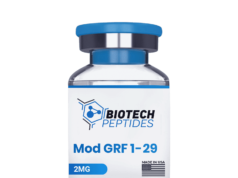Growth is both a funny and beautiful thing. One moment you’re holding on to your tiny bundle of joy and the next moment that bundle of joy who was so small is now halfway into a year’s journey. It is an amazing thing for your baby to have hit a milestone.
There are lots and lots of developmental changes that take place in your baby’s body with eating a passing day. It is not only the size of your baby that changes within the six months but also the nutritional needs and sources. Well, let’s check in to see what these needs and sources are.
Nutrient requirements of a 6-month-old infant

- Calcium: Have you ever wondered why they say milk helps with strong bones and teeth? It is thanks to calcium in it. Calcium is an essential nutrient that is helpful in providing strong bone and teeth during the development of your child.
- Iron: your baby’s body needs iron to make hemoglobin, which is a protein responsible for carrying oxygen from your baby’s lungs to the blood and other parts of your baby’s body.
- Zinc: I like to refer to this as the building block and maintainer. It is solely responsible for repairing the cells in your baby’s body as well as cell growth.
- Fat: this is responsible for keeping your baby warm I.e. maintaining a standard temperature within your baby. it is also responsible for developing the brain.
- Carbohydrates: this is the energy provider for your baby’s body.
- Protein: this act as a building block for your baby
- Vitamins: now this group is divided into 2- water soluble and fat-soluble vitamins. both groups are essential for the growth and development of your baby
- Minerals: just like vitamins are essential for the growth and development of your baby.
How much food should your baby eat at six months

Before the six-month mark, your infant must feed on breast milk or baby formula. At 6 months it is alright to introduce solid foods for either breakfast or lunch to your baby. This can be in the form of food or snack. Note that this all depends on the choice that you make and feel is convenient for you and your baby.
Introducing a fruit, or perhaps a vegetable can often do the trick to your baby eating solid foods. It is better that you give yourself a three-day trial to monitor your baby’s response to the new changes in diet. This should be stopped with an immediate effect if your baby responds negatively.
If you are having difficulties getting your baby to eat solid foods, you can consider including store bought baby food in their diet. These often include dried fruits and vegetables and will help develop your baby’s palates and get their taste buds used to these fruits and vegetables.
Food options that can be introduced to your six-month baby

There are several food options that you can go for. From fresh fruits to mashed vegetables, they can eat them all.
Be sure to discuss with your pediatrician regarding which foods your 6-month-old can and cannot eat. Your pediatrician will also give you a proper and professional rundown of which food products are suitable for your baby.
Here are some amazing options for solid foods:
- Purees: This ranges from purees made out of fruit like apples, pears, and apricot. Vegetable options include carrots, potatoes, butternut squash and pumpkin. It is important to note that you have to wash and peel them thoroughly before you make a meal out of them.
- Porridges: Not only are these easy on your baby’s digestive system, but it’s also very easy to make and affordable as well. Porridges can be made out of cereals such as oats, rice and barley.
- Soups: this is an amazing way to kill two birds with one stone! Not only do soups give amazing nutritional values but they also keep your baby hydrated without the need of excess water.
You should note that whilst making these foods, it is important to avoid sugar and salt as this can affect your baby’s digestive system and have a negative effect on your child’s kidney.
Whole milk and other dairy products should also be avoided, because your baby’s digestive system isn’t mature enough to digest them. Instead, you can use breastmilk or baby formulas as a creamer.
Feeding tips and dealing with allergic foods

Before we dive into what a typical meal plan would be, I would love to address that sometimes your child could show signs of allergic reactions such as excessive vomiting, abdominal pain, wheezing, difficulty breathing, skin rash, diarrhea and constipation. If your baby should show any of these symptoms or any sort of discomfort, make sure to seek proper medical attention as soon as possible.
Now, a typical meal plan could begin with feeding your child with breast milk or instant formula as the main meal for each time frame (I.e., breakfast, lunch and dinner). You can then add any of the food options above as a snack or a meal in between foods. This is to ensure that your baby’s system gets acquainted to the new diet.
So, for example, you can feed your child breast milk or baby formula for breakfast, lunch and dinner whilst you serve a puree or porridge as a mid-morning snack or an appetizer towards dinner.
Feeding tips to ensure safety
- Start with small quantities and gradually increase feeding amount after your baby gets used to the food.
- Avoid combining ingredients. It is easier to notice foods that your baby likes most and also spot any allergens when foods are given separately.
- Purees and baby food should be smooth with no lumps. Lumps can obstruct your baby’s airways and cause chocking
- Food should be given with a feeding bottle or teaspoon.
- Watch out for your baby’s response to the food being given.
- Don’t over feed your baby as this could cause bloating and may lead to eating disorders and obesity.




